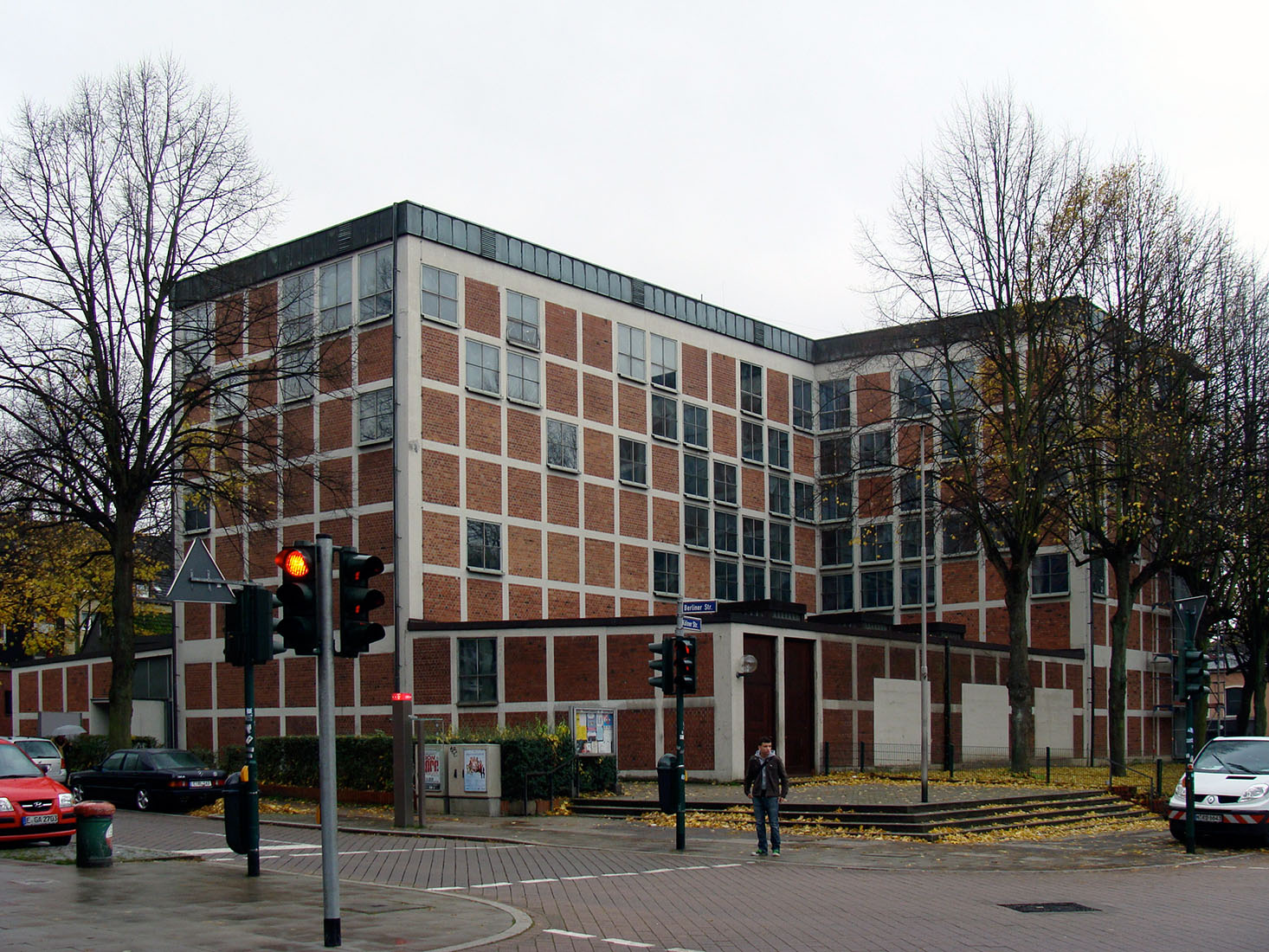 |
 |
 |
 |


Church St. Antonius, Essen
Berliner Strasse / Kölner Strasse
1956 - 1959
In
1956 a competition among three architects was announced for a new
church building in Essen-Fronhausen. The new building was to replace an
older church which
was destroyed in World War II. Only the tower of the predecessor church remained. Rudolf Schwarz submitted three competition designs. For his design "T" Rudolf Schwarz
received the design comission. The competition design shows a T-shaped church rising above a trapezoidal plan. The low side aisles widen towards the altar. Nave and
transept are illuminated by three rows of windows within a concrete tracery. The large rear wall behind the altar, the end walls of the transept and the gable wall of
the nave remain closed.
Some adjustments have been made in the realized building. The floor plan is now square and has a side length of 33 meters. The main building with nave and transept
reaches a height of 16 m. The two low aisles have a constant width, which corresponds to the transept. The intersection point of nave and transept is marked by two columns.
The altar area occupies the whole crossing of the church. At the end of the nave, opposite the altar the singers are located on some shallow steps. The construction of
the church is made of a square concrete grid, which is filled with exposed brickwork. Only a few fields of the grid are provided with stained glass windows, which seem to
be arranged in random pattern. The end walls are almost closed, while there are more openings in the area of the altar. This layout makes the altar area the brightest place in the church,
an often used motif in the architecture of Rudolf Schwarz. The aisles are illuminated only by cubic lanterns. The ceiling is designed as a concrete beam construction. The beams
intersect above the church crossing. Green marble inlays within the white floor mark the baptismal site and Altar of Our Lady. The tower of the old church was connected to
the new building only via the sacristy. In 1972 the tower was removed. Unfortunately, the building is partially deformed by later interventions. The rear wall of the church was
covered with sheet metal from the outside, heavily disturbing the appearance of the building. Broad eaves of copper are running all around the T-shaped main volume.
Also on the side aisles, the roof edges were changed.
was destroyed in World War II. Only the tower of the predecessor church remained. Rudolf Schwarz submitted three competition designs. For his design "T" Rudolf Schwarz
received the design comission. The competition design shows a T-shaped church rising above a trapezoidal plan. The low side aisles widen towards the altar. Nave and
transept are illuminated by three rows of windows within a concrete tracery. The large rear wall behind the altar, the end walls of the transept and the gable wall of
the nave remain closed.
Some adjustments have been made in the realized building. The floor plan is now square and has a side length of 33 meters. The main building with nave and transept
reaches a height of 16 m. The two low aisles have a constant width, which corresponds to the transept. The intersection point of nave and transept is marked by two columns.
The altar area occupies the whole crossing of the church. At the end of the nave, opposite the altar the singers are located on some shallow steps. The construction of
the church is made of a square concrete grid, which is filled with exposed brickwork. Only a few fields of the grid are provided with stained glass windows, which seem to
be arranged in random pattern. The end walls are almost closed, while there are more openings in the area of the altar. This layout makes the altar area the brightest place in the church,
an often used motif in the architecture of Rudolf Schwarz. The aisles are illuminated only by cubic lanterns. The ceiling is designed as a concrete beam construction. The beams
intersect above the church crossing. Green marble inlays within the white floor mark the baptismal site and Altar of Our Lady. The tower of the old church was connected to
the new building only via the sacristy. In 1972 the tower was removed. Unfortunately, the building is partially deformed by later interventions. The rear wall of the church was
covered with sheet metal from the outside, heavily disturbing the appearance of the building. Broad eaves of copper are running all around the T-shaped main volume.
Also on the side aisles, the roof edges were changed.